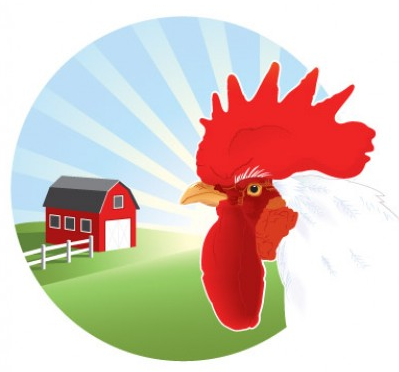Margaret Heffernan, C.E.O. of 5 Businesses says it’s time to forget the pecking order at work.
The chicken study that defined productivity:
Heffernan bases her statement on some rather surprising research. William Muir, an evoluntionary biologist at Purdue University studied chickens in order to discover the secret behind super productivity. Muir knew that chickens were similar to people at work in some respects. They live in groups, just as we work in groups. He made a comparison between the 6th generation of a ‘normal’ flock of chickens and the 6th generation of a specially selected flock bred from high productivity stock.
At the end of the study, the ‘normal’ chickens were doing as expected. The ‘super’ flock, however, was a different story. Only 3 had survived. The rest had been pecked to death. These 3 had survived and displayed high productivity only by killing the rest of the flock.
The conclusion of the study was that attempting to cultivate high productivity was in fact counterproductive.
Heffernan compares this approach to our current worldview where we face high competition and it’s only the exceptionally creative, talented, most skilled and intelligent who are recognized and rewarded. In other words, to be recognized and valued, we must become part of that ‘super’ flock achieving by suppressing others productivity.
It turns out that the key to success lies in quite a different direction. The key to success lies not in any one brilliant person but in the cooperation and collaboration of many ordinary people.
This was proved by an M.I.T. study which discovered that it wasn’t groups containing one or more individuals with high I.Q.’s that were successful. Hundreds of volunteers were put into groups and given very difficult problems to solve.
The groups that were successful were those who shared 3 characteristics:
1. Social sensitivity
2. Willingness to give time to each other
3. Groups with a predominance of women
Social Sensitivity: The test results were measured using a technique called “Reading the Mind in the Eyes”. It is a test of empathy. Groups with a high rate of empathy tended to be more successful and more productive.
Time: The successful groups were also shown to be willing to give each other equal time. Rather than having one or two people dominating the group’s thought processes, each member in the group was accorded an equal ‘say’ and each member participated equally. None of the members were uninvolved.
Women: The researchers were not sure for the reason behind the higher success of groups with more women in them. The feeling was that it could have been that women often enjoy a higher level of empathy, or it could have been that they brought a more diverse outlook to the group.
The results of these studies underscored a trend we’ve been seeing emerging in the workplace for the past few years. As Heffernan says, “What happens between people really counts because in groups that are highly attuned and sensitive to each other, ideas can flow and grow. People don’t get stuck. They don’t waste energy down dead ends.”
Heferson cites an amusing example of the world famous engineering firm, Arup, who were commissioned to build the equestrian centre for the Beijing Olympics. The engineers could have spent a very long time assessing the logistics of the project, especially one tricky area: how much waste to cater for. Instead, they bypassed the most ‘professional’ options for the most logical and came up with the answer in less than a day. Instead of working with vets, researching, creating spreadsheets and so on, they asked the Jockey Club of New York.
It turns out that ‘helpfulness’ is key to successful teams. Helpfulness trumps individual intelligence. Helpfulness naturally follows the philosophy of Henry Ford who understood that his own skills and abilities were not nearly as important as knowing how to work with others who had the necessary skills and knowledge.
Today, the global wealth of resources and ease of collaboration if we develop our networks with other people, it can take literally minutes to solve the most complex of work related problems. Heffernan says that SAP estimates that you can answer any question in 17 minutes. Amazing how productive helpfulness can be.
Looking at our modern office designs, we’re seeing a focus on creating spaces that are conducive to collaboration, interaction and discussion. Heffernan says that some companies she has visited have actually banned coffee cups on desks in an effort to force people to socialize around the coffee machine. It seems the old ‘water cooler’ is where it’s at, after all.
Organizations across the world are creating spaces, both on and off campus, where employees can gather to ‘collectively restore’. Places where people who don’t normally bump into each other at work can interact in a more casual way. For example, Idexx, a Maine organization, has created vegetable gardens on campus so employees can get to know each other.
Human nature is such that it’s our humanity, our bonds, relationships and interactions that motivate us, not our intelligence and skills. As Heffernan puts it, “What matters is the mortar, not the bricks.”
In the end, it’s the Social Capital that leads to success.
Social Capital is ‘the reliance and interdepndency that builds trust.’ Social capital and time are the two axes on the graph. The greater the social capital, the less time it takes to get things done.
As we learn more about this, we understand more about how to create workplaces that nurture that social capital and provide an environment in which everyone can be a contributor of value working together to realize a common goal.




